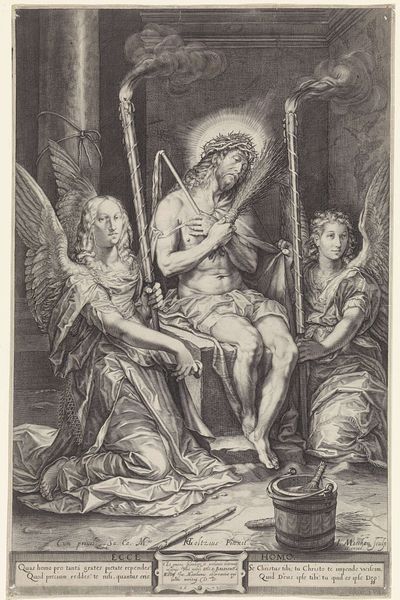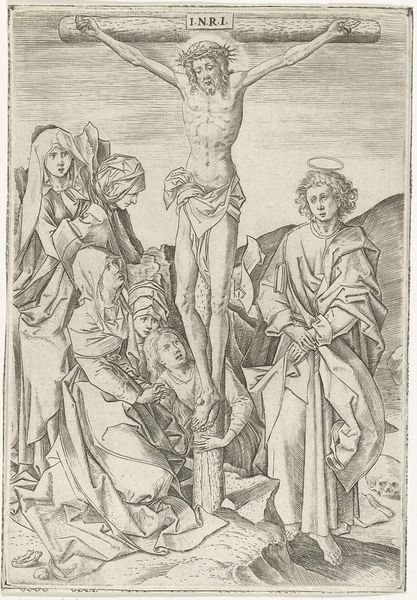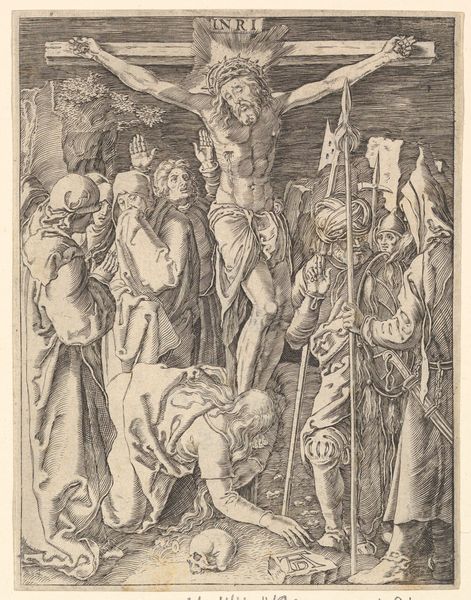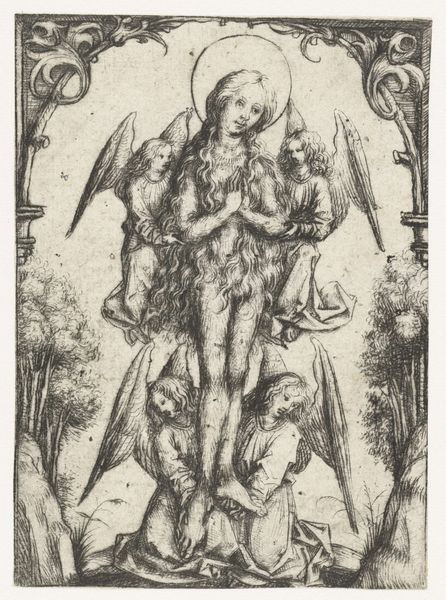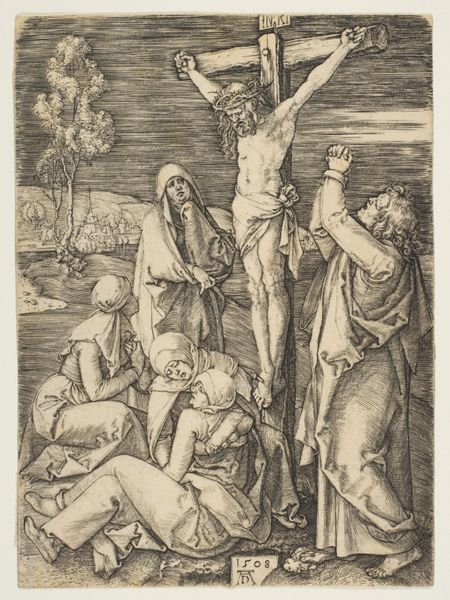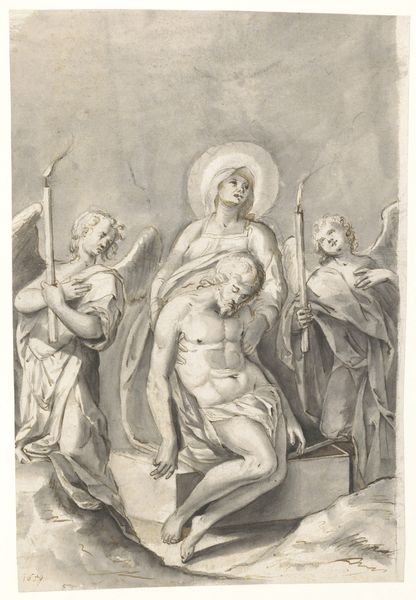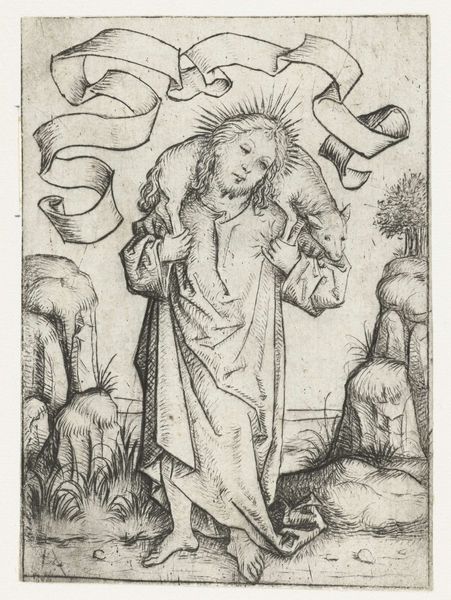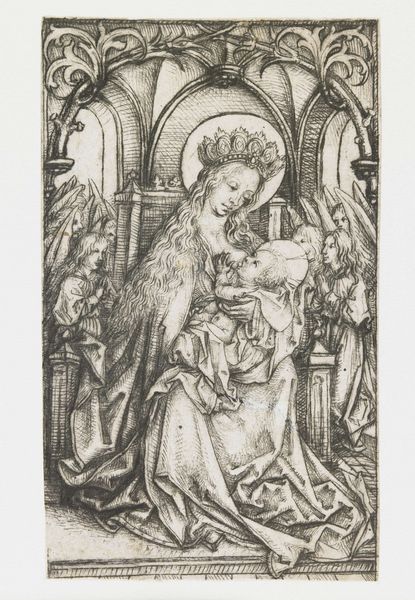
Het lichaam van Christus ondersteund door twee engelen 1473 - 1477
0:00
0:00
print, etching
#
portrait
#
medieval
#
allegory
# print
#
etching
#
figuration
#
history-painting
#
northern-renaissance
Dimensions: height 103 mm, width 71 mm
Copyright: Rijks Museum: Open Domain
Editor: This is "The Body of Christ Supported by Two Angels," an etching by the Master of the Amsterdam Cabinet, made sometime between 1473 and 1477. I’m struck by how delicate and somber it is. What layers do you see in this piece? Curator: Well, immediately I think of how power, gender, and identity intersect here. Christ’s body, vulnerable and displayed, evokes a powerful message. How do the angels supporting him play into the dominant narratives of the period? Are they figures of solace, or are they complicit in upholding the social hierarchy and sacrifice? Editor: I see your point about their role. It's easy to just see them as gentle, comforting figures. Curator: Exactly. Consider the gaze – who are they looking at? The viewer, or are they internalizing and performing grief? Who benefits from the visual depiction of Christ’s suffering? And how does this image participate in constructing and reinforcing religious and patriarchal ideologies? Editor: So, you're suggesting the image is more about the societal implications of the crucifixion, rather than just a representation of a biblical scene? Curator: Precisely. This image normalizes suffering for some form of perceived future salvation. How does this ideology impact those marginalized in society then and now? Whose bodies are consistently subjected to suffering? It is about power, control and the way that narratives are perpetuated through images. What do you make of the use of line? How does that affect the emotions conveyed? Editor: Now I notice how precise and delicate the lines are and that there are no bold, expressive brushstrokes. The small size and delicacy amplifies the image’s quiet tone. The image may be subtle but your perspective isn't subtle at all and made me look at it through an entirely different lens. Curator: Understanding this piece in its historical and societal context lets us understand art’s active role in broader discussions around identity and justice. I leave now with more food for thought about how art has, and can be used, to both subjugate and liberate.
Comments
No comments
Be the first to comment and join the conversation on the ultimate creative platform.

